Multidisciplinary Network
-
Radiofrequency Ablation
Tumors can be destroyed without surgery and scars. So far, we have treated the patients from 15 countries including the U.S., China, the U.K., Canada, Japan, and Russia. We have performed this therapy for 3,799 times between 2005 and 2015.
-
Thyroid Cancer Surgery
We have performed minimally invasive endoscopic surgery 5,693 times between 2005 and 2015.
-
Total Biopsy
Total biopsy is very accurate and safe. It doesn’t have disadvantages of fine needle biopsy.
-
One-stop Service
In principle, patients are examined and tested on a single visit.
-
Iodine Therapy Rooms
We have four dedicated rooms with the latest facilities to treat patients with thyroid cancer.
-
Nuclear Medicine
We perform the best nuclear medicine treatment with state-of-the-art systems.
-
Medication and Obesity Management
We provide drug therapy for hyperthyroidism and hypothyroidism. Weight gain issues due to the conditions are also treated.
Daerim St. Mary's Hospital Go to video
Medical Staff Guidance Go to medical staff
Thyroid
The thyroid gland is located in the center of the neck and is about the size of a thumb. It is a butterfly-shaped endocrine organ with wings spread on the left and right side of the bronchi. The thyroid gland of adults weighs about 15 to 20 grams and usually you cannot feel it.
Thyroid Disease
As thyroid hormones increase, the metabolic rate of our body excessively increases as well. The major symptoms include weight loss, general weakness, muscle weakness, and shaking hands. The increased heart rate can cause a palpitation. Unless treated, it can lead to heart failure or arrhythmia. The thyroid gland can be bigger and the abnormal protrusion of the eye can occur. Irritability, emotional anxiety, sleep disturbances, etc. may occur as well. Men can suffer periodic paralysis while women can undergo irregular menstruation or lighter menstrual flow. It can also cause osteoporosis.
The lack of thyroid hormones can cause our metabolism to be decreased in the body. The main symptoms include swelling of the face or the body, weight gaining, chronic fatigue or sensitivity to cold. Depression, joint pain, and elevated cholesterol can also happen. Sometimes constipation is accompanied because the movement of intestines slows down. The size of the thyroid gland can be bigger.
The causes of hyperthyroidism and hypothyroidism are not yet clearly found, but it has been reported that autoimmunity can be the main reason. In addition to genetic factors, environmental factors such as stress, infection, drugs, and trauma act as triggers to make specific auto-antibodies to the thyroid gland, which stimulates the thyroid gland to cause hyperthyroidism or hypothyroidism.
When a part of the thyroid gland gets bigger to create a lump, it is called a thyroid nodule (a thyroid tumor). There are several types of thyroid nodules, including benign nodules, malignant nodules (cancer), and cysts. Thyroid nodules are very common, and nodules that can be felt occur in about 5% of the population. About 5% of the nodules are identified as malignant, affecting the patient's health and life so that appropriate treatments are required.
Biopsy
If cancer is suspected, a biopsy is required to confirm the diagnosis. Among the various biopsy methods, the most commonly used method is a “Core NeedleBiopsy”, in which some cells can be obtained after a needle with a center hollow is inserted into the suspicious area. When the needle is removed quickly from the tissue, a small amount of tissue to be examined can be taken.
When to take a biopsy
- 1) When the thyroid nodule is large (more than 1cm, more than 1.5cm for cystic tumors)
- 2) When cancer is suspected by imaging tests
- 3) When lymph node metastasis is suspected
1) Fine Needle Aspiration
It is the most important test for nodules. In a real time, a needle is placed in an area considered as a nodule while a radiologist is monitoring the ultrasound imaging . A negative pressure can be applied to obtain cells in the nodule.
2) Total biopsy
If the sample taken from the fine needle aspiration is not enough or the diagnosis is not certain, the core needle biopsy can be conducted to obtain sufficient amount of tissue and to make a reliable diagnosis. In our clinic, a core biopsy is performed immediately once considered that the sample of the fine needle aspiration is not sufficient.
Diagnostic Imaging Clinics
Ultrasound Examination
It is an important procedure in order to check the lesion, to analyze the lesion from various aspects including shape or color, and to determine whether or not to perform the biopsy. Diagnostic ultrasound acts as a guiding device to obtain the exact location of a needle to take a sample of tissue for a biopsy. At Daerim St. Mary's Hospital, a radiologist directly performs the ultrasound examination. We have 8 diagnostic ultrasound machines in total including Philips IU-22 with the prime specifications. A variety of equipment is applied depending on a patient's condition.
- 1) It is the most accurate examining technology among diagnostic imaging methods for a thyroid disease
- 2) In particular, the size and the features of a nodule can be accurately identified.
- 3) It can be a guideline for a fine needle aspiration biopsy and a core biopsy
CT / Magnetic Resonance Imaging (MRI)
CT / Magnetic Resonance Imaging (MRI) is necessary to diagnose the stage of breast cancer or metastases to the lymph nodes at armpits. It provides better clear images, which is superior to ultrasound images. A patient is not exposed to radiation. Daerim St. Mary's Hospital uses Ingenia CX 3.0T MRI equipment manufactured by Philips. It helps save examination time and microscopic lesions can be identified with high-quality images.
Nuclear Medicine to Scan Thyroid
- 1) Differential diagnosis of hyperthyroidism, hypothyroidism, and thyroiditis
- 2) Diagnosis of thyroid nodules
- 3) Diagnosis of metastasis before/after surgery
- 4) Diagnosis of parathyroid adenoma or hyperplasia
Treatment for Thyroid
Treatment of Hyperthyroidism and Hypothyroidism
There are three methods for hyperthyroidism treatments : antithyroid drugs, surgery, and isotope therapy. For Graves disease, antithyroid drugs are preferred as a primary treatment, but it is also a good treatment method to take an isotope treatment or a surgery since Graves disease is difficult to control with drugs and it has the high frequency of recurrence. It usually takes at least several weeks to see the effect of thyroid medications and several months to see the thyroid workingproperly. For hyperthyroidism, even though the thyroid works properly, it is likely to occur again once the medication is early stopped, so a long-term period of administration should be considered. If the patient takes the medication inconsistently or irregularly, the treatment period will be getting longer and the medication does not respond effectively. For hypothyroidism, the thyroid hormone is administered to maintain the level of thyroid hormone to the same level as in normal people, but it takes a long time to see the effect.
Treatment of Thyroid Nodules
Benign nodules are usually monitored periodically for changes. When the lump is found larger than 3cm, it causes a cosmetic problem, you feel pressure or pain in the neck due to the lump, or the lump grows even afterthe medication administered, it is recommended to remove it surgically or take the thyroidectomy with radiofrequency ablation. Once it is identified as a malignant nodule, taking a surgery can be the best treatment.
Radiofrequency Ablation (RFA)
It is a method to remove the tumor by using heat while a doctor monitors the ultrasound and places a thin needle (high frequency electrode) inside the thyroid tumor.
- When toperform the procedure (Benign Tumor)
- 1) When a thyroid tumor causes someissues related to a patient’s appearance
- 2) When a tumor causes pressures on the nerve or pain
- 3) When a small lump grows more than 3cm
- Advantages
- 1) General anesthesia is not required and the procedure can be performed in a short time.
- 2) There are no scars at all.
- 3) It can eliminate only targeted tumors and leavethe normal thyroid gland intact.
- 4) There are very few side effects.
- Disadvantages
- 1) The tumor is not immediately removed after the treatment, but the size is gradually reduced.
- 2) It can occur again in the possibility of 1~2%
- 3) It has not yet been applied to cancer.
Ethanol-based Tumor Ablation
This method is mainly used when the thyroid nodule is a cystic nodule. After extracting all the nodule content, 99% pure ethanol is injected into the nodule so that the tumor cells in the nodule can be regressed.
Treatments for Thyroid Cancer
Surgery is at the foundation of thyroid cancer treatment. The extent of resection of the thyroid gland is determined by the type,location,size,age or stage ofthyroid cancer. Unlike other cancers, most thyroid cancers are very curable and have a good prognosis. Even if metastasis have occurred, good results of treatment can be expected as long astheappropriate treatment is actively performed. When total thyroidectomy is performed, you should take thyroid hormones for good to supplement insufficient thyroid hormones, which helpsprevent cancer recurrence and development of undifferentiated cancer. Considering a certain stage, you should take radioactive iodine treatment. Radiation therapy can be considered when surgery is not available, when all cancer tissues cannot be removed, or when thyroid cancer has invaded the surrounding tissues a lot. Anticancer drug can be helpful for some patients.
Traditional Thyroid Surgery (open surgery)
As one of the most commonly used surgical methods, a doctor performs about 5 cm skin incision in the middle of the neck.
- Advantages
- 1) Easy to see the targeted surgical area
- 2) Easy to perform cervical lymph gland dissection
- 3) Easy to detach nerves when tumor invadesnerves
- Disadvantages
- 1) Scar remains in the middle of the neck
- 2) After surgery, a patient can undergo skin swelling, paresthesia in anterior triangle of the neck, foreign body sensationcaused by adhesion in the neck
Endoscopic Thyroid Surgery
Endoscopic thyroid surgery is a surgical method which uses an endoscope through an incision in the armpit or areola area, avoiding the incision in the middle of the neck. Both areola incisions and axillary incisions are largely performed.
- Method (AxillaApproach)
To perform axilla approach, it starts from 5 to 6 cm skin incision at axilla (armpit) followed by approaching the space between the sternum and the clavicle at sternocleidomastoid muscle. After dissecting the underside of the scapular muscle to have the thyroid gland exposed, a surgeon inserts a retractor and performs an operation using an endoscope.
- Indication (Adaptation)
At the beginning, Endoscopic Thyroid Surgery highly was applied to well-differentiated cancers less than 2 cm and follicular tumors less than 5 cm without obvious invasion at thyroid capsule. However recently, the target group has been expanded towell-differentiated cancer T3 lesions, benign tumors 5-8 cm in size, and Graves disease.
- Advantages
With a lateral approach through axilla, Endoscopic Thyroid Surgery does not leave a scar on the anterior part of the neck. A lymphectomy in the middle of the neck can be completely performed. Compared to open surgery, it has more advantages as the upper laryngeal nerve can be checked and saved. It lessens pain, discomfort, and numbnesswhich can be caused by fibrosis and skin adhesion at the anterior part of the neck.
- Disadvantages and Exclusions
Relatively, it takes time longer than open surgery. It is not recommendable for the case that either thyroid gland itself or tumor is too large to secure space. Also, even if the lesion is small, the endoscopic thyroid surgery cannot be the option for the patients when the lesion is near the posterior capsule of thyroid gland and there is a possibility of invasion to airways, esophagus, and recurrent laryngeal nerves.
Thyroid Ultrasonography
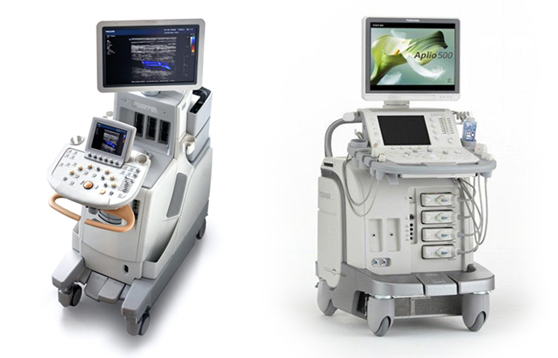
We have the latest models of Philips’ and Toshiba’s ultrasound systems.
Thyroid Biopsy
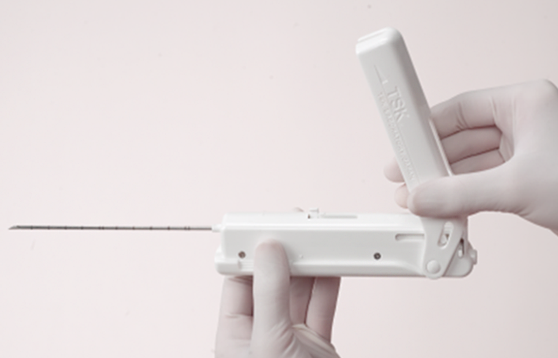
We have the latest model of ACECUT biopsy systems.
64-channel MDCT
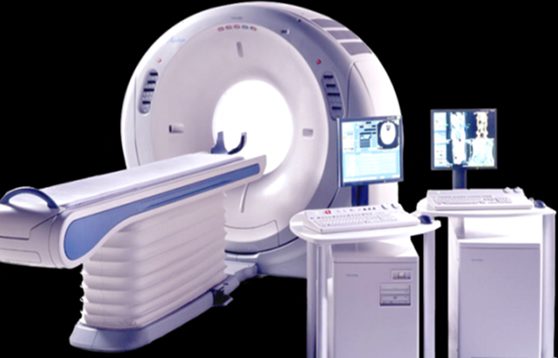
We are equipped with Toshiba’s Aquilion 64-channel CT scanner, which is the best CT scanner in the market and widely used by world-renowned hospitals including the Johns Hopkins Hospital and the Harvard-affiliated hospitals.
Gamma Camera
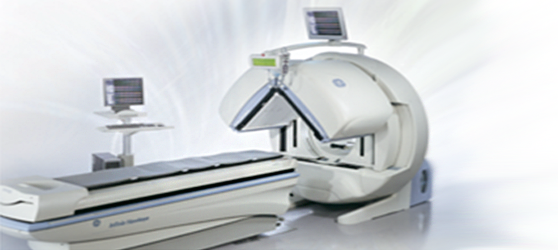
At the Center, we use a cutting-edge top-performing gamma camera system which is capable of SPECT for whole-body diagnostic imaging.
Radiofrequency Ablation
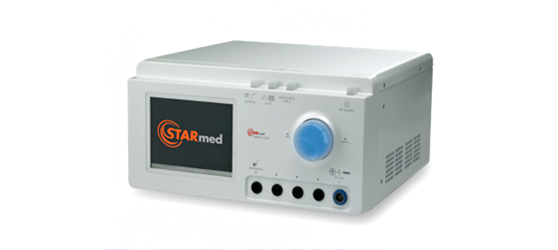
Radiofrequency ablation is a procedure that destroys tumors with heat. Daerim St. Mary’s Hospital applied it for thyroid cancer for the first time in the world and has treated the most patients of thyroid cancer with this procedure. At the Center, we have the devices from STARmed.
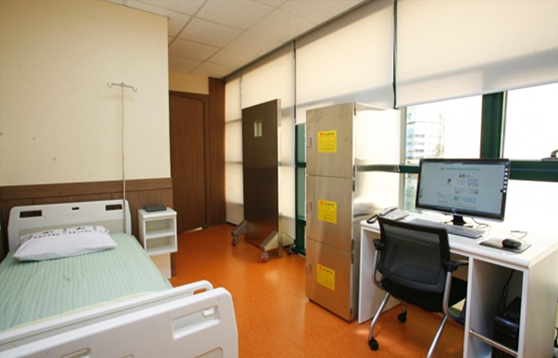
We have four rooms dedicated to iodine therapy which is essential to treat thyroid cancer as well as facilities of prestigious university hospitals.
Thyroid Center
- Tel : +82-2-829-8363
- Fax : +82-2-829-9166
- Email : kko711@drh.co.kr













